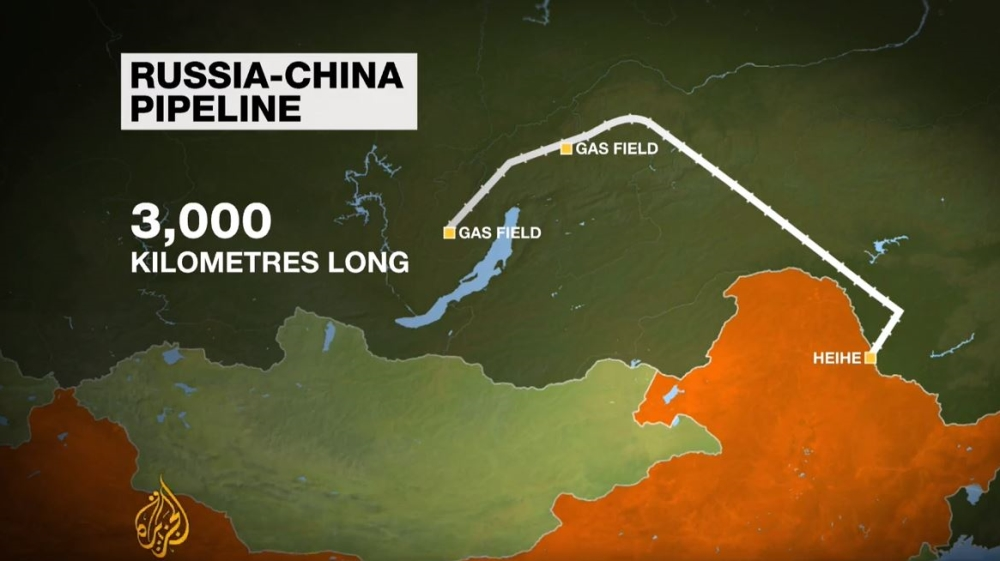Recent developments in the Power of Siberia 2 pipeline agreement—a project seeking to transport up to 50 billion cubic meters (bcm) of natural gas annually from Russia to China via Mongolia—have drawn sharp scrutiny from analysts who warn it may be more geopolitical symbolism than sound business. Critics flag lingering concerns over pricing mechanisms, financing structures, and whether China’s energy outlook still justifies a massive long-term fossil fuel investment.
A Symbolic Winner in Geopolitics?
During a high-profile summit in Beijing, Russia and China signed a legally binding memorandum to build the Power of Siberia 2 pipeline—expanding upon the existing Power of Siberia 1 route. This move is widely viewed as a show of defiance toward Western pressure and an affirmation of Sino‑Russian strategic coordination.
Yet Axios cautions: “experts highlight key uncertainties—especially pricing and financing… China’s domestic alternatives and slowing gas demand can undercut the project’s long‑term value,” suggesting the announcement serves political optics more than energy economics.
Unresolved Pricing, Financing, and Timelines
According to Reuters, Gazprom confirmed the memorandum but stressed that pricing, construction timelines, and investment details remain undecided, creating skepticism around the pipeline’s feasibility. The Wall Street Journal underscores China’s growing leverage in the deal and notes that pricing and financing talks are yet to be finalized—casting doubt on when, or if, the pipeline will be completed.
Analysts like those at Columbia University’s energy policy forum frame the project as a strategic pivot by Russia, rather than a profitable venture. They highlight unresolved issues like take-or-pay obligations, long-term pricing contracts, and China’s lack of urgency.
Shifting Chinese Demand and Energy Alternatives
China’s long-term energy needs are in flux—renewables, nuclear, and LNG alternatives temper the appeal of a coal-alternative pipeline. Experts note that slowing gas demand growth and diversified energy sourcing weaken the business case for a multibillion-dollar fossil fuel corridor.
The Strategic and Economic Implications article quantifies the stakes: disagreement persists over pricing (with a hypothetical gap noted between $350 and $60 per 1,000 cubic meters) and Mongolia’s hesitance—having excluded the pipeline from its near-term action plan—raises further questions.
Numbers, Risks, and Strategic Implications
Here’s a quick snapshot of the Power of Siberia 2 project and its challenges:
| Feature | Details |
|---|---|
| Capacity | ~50 bcm/year via Mongolia |
| Strategic Motivation | Secure alternate export route; bolster China’s energy security |
| Outstanding Challenges | Pricing disagreements, financing arrangements, undefined construction timeline, ambiguous volume commitments |
| Geopolitical Message | Demonstrates Sino-Russian unity amid Western sanctions |
| Risk Factors | Declining gas demand, LNG alternatives, Mongolia’s planning exclusions |
What It All Means
-
For Russia, the pipeline stands as a geopolitical lifeline—offering a way to reroute gas away from shrinking European markets and preserve revenue amid sanctions. But its success hinges on finalized contracts and financial commitments.
-
For China, any pipeline lock-in must compete with a broader energy strategy that emphasizes renewables, LNG flexibility, and diversification—not to mention domestic supply growth.
-
For Global Energy Markets, the shift could have ripple effects—impacting LNG markets (particularly American and Australian exporters) while reshaping energy dependencies in Eurasia.
What’s Next?
The Power of Siberia 2 remains a project in limbo. Both sides have struck bold diplomatic posturing, but operationalization remains contingent on resolving core commercial terms.
The coming months—or years—will hinge on:
-
Completion of binding price and volume agreements
-
Financing clarity, particularly given Mongolia’s lukewarm stance and external capital constraints
-
Concrete timelines for construction, including contractor selection and expected completion dates
Until then, the pipeline remains more a symbol of political partnership than a solid bet on energy economics.

